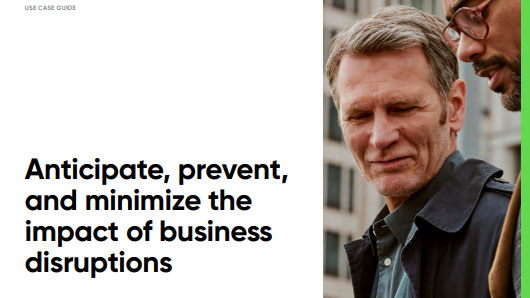What is data processing?
What is data processing - understand the benefits, types, and tools, and get the best insights in a data-intensive world

All organizations do data processing in some capacity to better understand their customers or improve their services, but what is data processing? In its simplest form, data processing is collecting and manipulating data into new, useful information.
The European Commission defines data processing as anything that includes the collection, recording, organization, storage, adaptation, retrieval, use, disclosure by exchange or otherwise, or the restriction, erasure, or destruction of personal data.
Changes to data are also considered data processing. This can include the aggregation, transformation, filtering, and cleaning of data into a format that can be used for business intelligence and reporting, or machine learning, whether this be manual or automated data processing.
As much as this isn't a new concept, the increased adoption of new technology - and technology itself advancing faster than ever - has led to increased data use, meaning data processing is even more important within your organization
So let's look at what data processing is and why it should be an important part of your business strategy.
GDPR definition of data processing
Ever since GDPR was introduced in May 2018, there’s been an important definition for data processing.
As per Article 4.2 of the EU’s GDPR, processing can be defined as "any information relating to an identified or identifiable natural person ('data subject'); an identifiable natural person is one who can be identified, directly or indirectly, in particular by reference to an identifier such as a name, an identification number, location data, an online identifier or to one or more factors specific to the physical, physiological, genetic, mental, economic, cultural or social identity of that natural person".
Sign up today and you will receive a free copy of our Future Focus 2025 report - the leading guidance on AI, cybersecurity and other IT challenges as per 700+ senior executives
The stages of data processing
Data processing contains several stages, regardless of how much data you’re processing.
1 Data collection: The data needs to first be collected before any processing takes place. Many data collection methods rely on automatic harvesting, but others will be more conspicuous and are based on interactions with data subjects. No matter how the data is collected, it is of the utmost importance that the information is stored in a format and order that is appropriate to the needs of the business and can be easily sourced for processing.
RELATED RESOURCE

Discover more about Dell’s adaptive, secure, and resilient portfolio for the digital business and win in this data-centric era
2 Preparation: Once the data is collected, preliminary work is required to prepare the data for in-depth analysis. For example, this may require a business to only select the data that is required for a particular task, and discard anything incomplete or irrelevant. This typically drastically reduces the time needed to fully process the data and reduces the likelihood of errors further down the line.
3 Input: Now that the data has been prepared, whatever survived the initial filter will be converted into a machine-readable format, one that’s supported by the software that will analyze it. The conversion at this stage can be incredibly time-consuming, as the entire data set will need to be double-checked for errors as it is submitted. Any missing or corrupted data at this stage can nullify the results.
4 Processing: Once submitted, the data is analyzed by prebuilt algorithms that manipulate it into a more meaningful format, one that businesses can start to glean information from.
5 Output: The resulting information can then be manipulated once more into a format suitable for end-users, such as graphs, charts, reports, video, and audio, whichever is most suitable for the task. This simplifies the processed data so that businesses can use it to inform their decisions.
6 Storage: The final stage involves safely storing the data and metadata (data about data) for further use. It should be possible to quickly access stored data as and when required, and all stored data must be kept secure to ensure its integrity.
While each stage is compulsory, the processing element is cyclical, meaning that the output and stage steps can lead to a repeat of the data collection step, starting a new cycle of data processing.
The future of data processing

Since the launch of GDPR, the process of data processing now must have customer consent. This means that the use and storage of data by businesses have come under tougher scrutiny, but a key reason for this legislation is the increase in the use of data.
Legacy methods of data processing are no longer an option as they cannot keep up with the sheer volume being sent, collected, produced, and stored. So as a result, the cloud appears the obvious next step, with the benefit of limitless storage.
The cloud is an ideal solution for organizations as it offers the convenience of automated data processing, which can be done quickly and efficiently. As a result, faster and more valuable data means greater business insights.
In addition, for companies with a hybrid, or remote workforce, the cloud offers built-in security and data protection making data processing far easier. One example of this is confidential computing, which allows users to process sensitive data while maintaining a robust level of encryption.
The ability to process unstructured data is also on the increase, thanks to the emergence of AI-enabled Unstructured Data Management (UDM), turning data like text-based interactions or chat logs into useful assets.
Many businesses still lack the specialized tools to do this, however, vector databases are one way forward in this time of generative AI.
Dale Walker is a contributor specializing in cybersecurity, data protection, and IT regulations. He was the former managing editor at ITPro, as well as its sibling sites CloudPro and ChannelPro. He spent a number of years reporting for ITPro from numerous domestic and international events, including IBM, Red Hat, Google, and has been a regular reporter for Microsoft's various yearly showcases, including Ignite.
-
 Can the ‘microshifting’ trend work in the tech sector?
Can the ‘microshifting’ trend work in the tech sector?In-depth Research shows that employees want to break up their working days into short, flexible blocks – here’s how tech leaders can implement what’s being coined as ‘microshifting’
-
 Driving sustainable AI success for partners with the AI flywheel
Driving sustainable AI success for partners with the AI flywheelIndustry Insights Igniting sustainable AI success and measurable ROI for partners with the AI flywheel
-
 PowerEdge - Cyber resilient infrastructure for a Zero Trust world
PowerEdge - Cyber resilient infrastructure for a Zero Trust worldWhitepaper Combat threats with an in-depth security stance focused on data security
-
 Anticipate, prevent, and minimize the impact of business disruptions
Anticipate, prevent, and minimize the impact of business disruptionsWhitepaper Nine best practices for building operational resilience
-
 Three steps to transforming security operations
Three steps to transforming security operationsWhitepaper How to be more agile, effective, collaborative, and scalable
-
 Top ten ways to anticipate, eliminate, and defeat cyber threats like a boss
Top ten ways to anticipate, eliminate, and defeat cyber threats like a bossWhitepaper Improve your cyber resilience and vulnerability management while speeding up response times
-
 Capita handed £50m London police contract weeks after losing pension data
Capita handed £50m London police contract weeks after losing pension dataNews The outsourcer will provide digital fraud reporting services after its cyber incident disclosure drew criticism
-
 Supercharge trust for operations
Supercharge trust for operationsWhitepaper Innovating through uncertainty
-
 The complete SaaS backup buyer's guide
The complete SaaS backup buyer's guideWhitepaper Informing you about the realities of SaaS data protection and why an SaaS back up is essential
-
 The 'cyber aSaaSin' manual
The 'cyber aSaaSin' manualWhitepaper Providing valuable insights to identify SaaS data enemies and win the battle against SaaS data threats